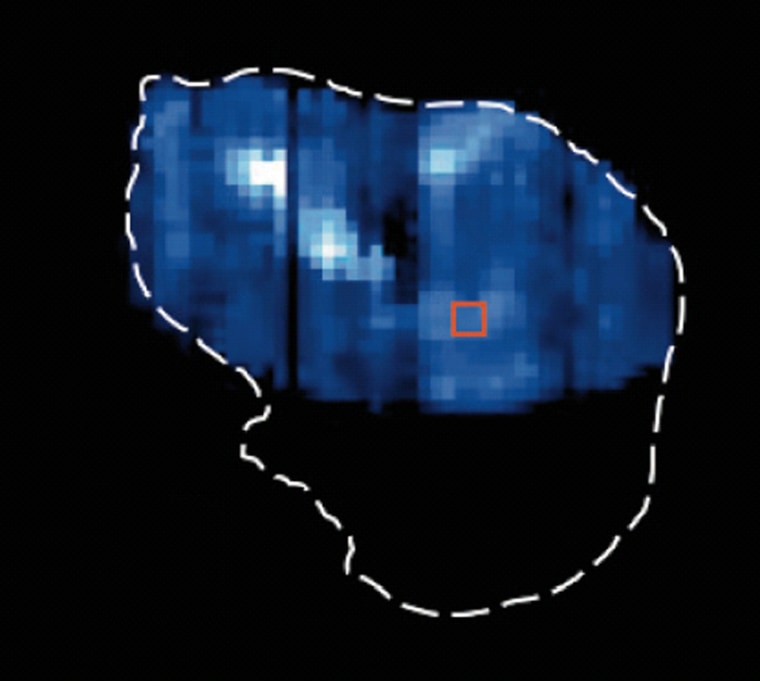Scientists have long known that a major ingredient in comets is water ice, but they were unsure whether the ice was contained mainly inside or if it could be found on the surface as well.
A new analysis of data from NASA’s Deep Impact mission last year provides the first evidence that water ice can indeed exist on a comet’s exterior.
In a new study released Thursday in the online edition of the journal Science, researchers report that the surface of Tempel 1, the comet targeted by Deep Impact, has three small pockets of water ice.
Tempel 1 has a surface area of roughly 45 square miles, or 1.2 billion square feet (111 million square meters). The area taken up by the water ice, however, is only 300,000 square feet (27,870 square meters). The rest of the comet surface is dust.
“It’s like a seven-acre skating rink of snowy dirt,” said study co-author Peter Schultz of Brown University.
On July 4, 2005, NASA slammed a heavy copper probe called Impactor into Tempel 1’s surface while it was 83 million miles (133 million kilometers) from Earth. The resulting collision created a stadium-sized crater and flung tons of debris into space. Impactor was one of two Deep Impact spacecrafts; the mothership, responsible for recording and analyzing the blast, was called Flyby.
The researchers believe Tempel 1’s surface ice used to reside inside the comet and became exposed over time. It’s also thought that occasional geyserlike blasts of dust and vapor, called jets, send the ice outward. Once ejected, the ice crystals can become incorporated into the luminous coma, a cloud of material surrounding the main body of the comet, or the ice can become part of its tail.
The same team previously reported that Tempel 1’s interior also contained an abundance of organic material and suggested the comet may have originated in a region of the solar system now occupied by Uranus and Neptune.
